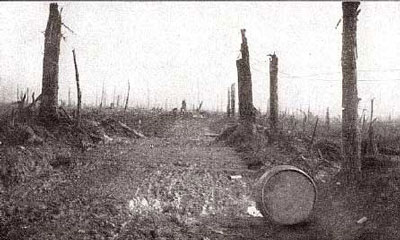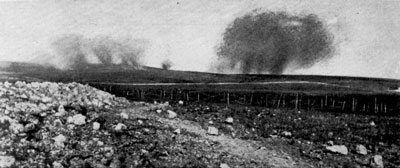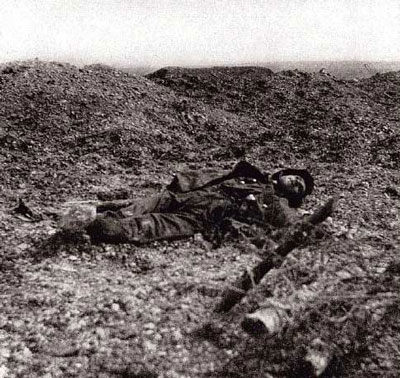
WWII: Maginot Line | Normandy | V-Weapon Sites | Arnhem
Further afield: Crete
| Home Tracing Military Ancestors Travel Advice CWGC Cemeteries Iron Harvest News Book Reviews Glossary Links Contact Me Verdun:
 
|
Le Mort Homme and Approaches to Fort VauxOn 6th March, the attack on the left bank commenced as two German divisions took the villages of Forges and Regnéville driving straight for Le Mort Homme. They were checked by French positions on Oie Hill and in the village of Cumières which was to be the scene of heavy fighting over the coming weeks as the Germans sought to gain a foothold on the slopes of the Mort Homme position. This advance was joined on 8th March by a five-corps attack on the right bank aimed at the next fort in the chain after Douaumont, Fort Vaux. Despite inching their way towards the fort, however, the French defences were becoming stronger and daily gains getting smaller. By the 14th March, whilst French positions on the eastern side of Mort Homme were secured, it was obvious that the German offensive had run out of steam and casualties were running at a higher rate than that of the French – completely contrary to Falkenhayn's original plan.
For much of the rest of March and into April the battle degenerated into a number of smaller actions for specific features or positions, all of which were heavily contested by the French. On the 20th March, to the far west of the line, Avocourt fell followed by Malancourt on the 31st, Haucourt on the 5th April and Béthincourt on the 8th. Meanwhile, on the right bank, General Mangin's 5th Division halted powerful attacks through the Bois de la Caillette towards Fleury. The 9th April saw another major assault on both banks with the Germans at last managing to secure the north-eastern slopes of the Le Mort Homme position. But elsewhere gains were limited and the French defences held firm, prompting Pétain's famous exhortation, "Courage! We shall beat them!"
His words were no idle boast. With the British taking over the line around Arras to the north, more reserves became available at Verdun. And the "Noria" system instigated by Petain allowed French divisions to be rotated regularly keeping them fresh and their morale high compared to German units, which typically stayed longer at the front. With their attacks failing to make significant progress and casualties mounting, Falkenhayn and the Crown Prince thought about winding the offensive down but von Knobelsdorf was keen to continue. He brought in new offensive-minded commanders such as von Lochnow who took charge of all troops on the right bank and used his influence with Falkenhayn to sanction further attacks. These at last bore fruit in early May when in a concerted effort the whole of Le Mort Homme was captured and French possession of the next height on the left bank, Côte 304, became untenable.
Meanwhile changes were also taking place in the French command. Joffre, becoming increasingly concerned by what he saw as Pétain's profligate use of fresh divisions, elevated him to command the Central Army Group with Robert Nivelle, a general with an acute attacking philosophy, taking over at Second Army. Together with Mangin, who was referred to as "the butcher" by his men, and the new aggressive German commanders, it heralded a new and even more furious phase of the battle. |


